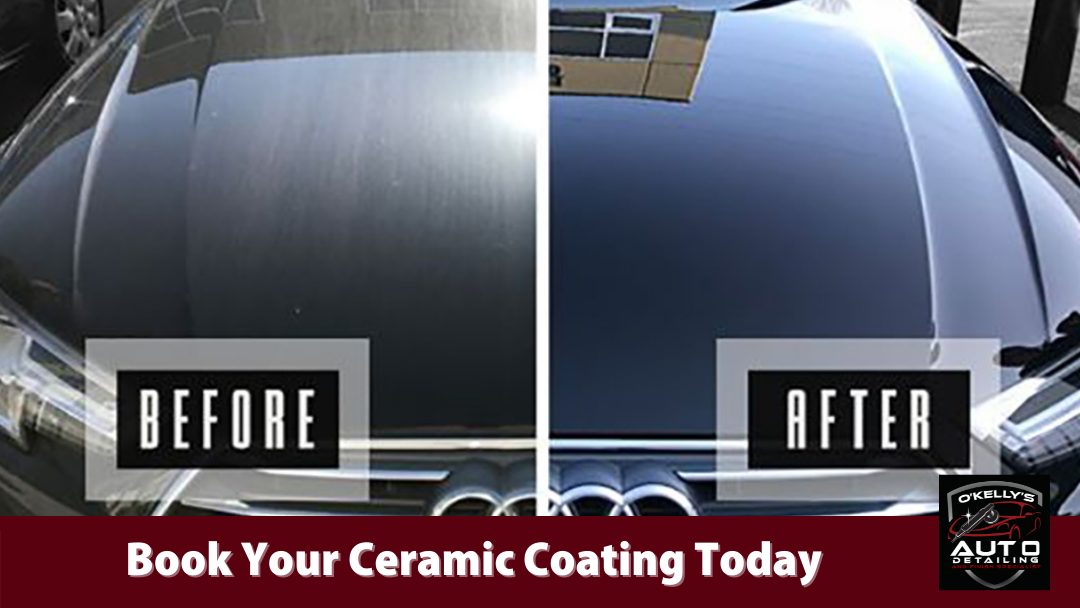Why Ceramic Covering Is the Ultimate Solution for a Flawless Complete
Ceramic layer has actually emerged as a leading solution for those seeking a perfect finish for their cars, thanks to its exceptional durability and safety functions. What elements really established ceramic finishing apart?
What Is Ceramic Covering?

When used correctly, ceramic covering creates a hydrophobic surface area that pushes back water and dirt, making it simpler to maintain and cleanse. Unlike traditional waxes or sealants, which typically use temporary protection, ceramic coverings can last for several years, depending on the item top quality and application method. The process of applying ceramic coating calls for precise prep work, including complete cleansing and in some cases repaint modification, to ensure ideal bonding and efficiency.
Ceramic layers are not limited to automotive surfaces; they can also be utilized on various materials, consisting of glass, metal, and plastics, giving a versatile solution for boosting defense. Overall, ceramic covering represents a significant innovation in surface area protection technology, combining both aesthetic and functional advantages for a large range of applications.
Benefits of Ceramic Layer
While many surface protection options exist, the benefits of ceramic covering stick out because of its unique buildings and resilient performance. Among the primary benefits is its exceptional resilience. Ceramic Coating Philadelphia. Unlike typical wax or sealers that call for regular reapplication, ceramic coverings supply a resilient layer that can last for numerous years, substantially reducing upkeep efforts
One more noteworthy benefit is enhanced defense against ecological contaminants. Ceramic layers develop a hydrophobic surface that drives away water, dust, and different contaminants, making it less complicated to cleanse. This feature not just protects the lorry's look however also lessens the risk of rust and oxidation, specifically in extreme climate problems.
Furthermore, ceramic finishes offer superior resistance to UV rays, protecting against fading and deterioration of paint with time. This UV defense is essential for maintaining the visual worth of automobiles and surfaces exposed to direct sunshine.
Additionally, the shiny surface accomplished with ceramic finish improves the total visual charm, providing surface areas a showroom-quality sparkle. Overall, ceramic layers stand for a significant innovation in surface security technology, giving long-lasting benefits that cater to both aesthetic and functional needs.
How It Functions
Understanding the science behind ceramic finishings reveals how they offer such amazing defense and durability. At its core, a ceramic finish is a fluid polymer that chemically bonds with the vehicle's manufacturing facility paint. This bonding produces a protective layer that is both hydrophobic and oleophobic, repelling water, dirt, and oil. The main component of many ceramic coverings is silicon dioxide (SiO2), which is obtained from quartz. This substance adds to find more the coating's hardness and resistance to scrapes, UV rays, and environmental impurities.
The application procedure entails numerous actions, including surface prep work, which is critical to attaining optimum bond. Once used, the coating undergoes a curing process, during which it solidifies and creates a semi-permanent bond with the paint surface. This bond is what identifies ceramic coverings from conventional waxes and sealants, supplying a longer-lasting protective barrier that can endure for several years.
Moreover, the thickness of the covering can boost its protective high qualities, making sure that it can stand up to harsh conditions. Ultimately, the science of ceramic finishings incorporates advanced materials learn this here now with ingenious application methods to deliver an unparalleled level of security and aesthetic improvement for cars.
Contrast With Traditional Approaches
When contrasted to conventional paint protection approaches such as waxes and sealers,The advantages of ceramic finishes come to be particularly evident. While waxes offer a momentary shine, usually lasting a couple of weeks to a number of months, ceramic finishings offer a long-lasting protective layer that can sustain for a number of years. This durability substantially decreases the regularity of reapplication, making ceramic finishes a much more economical remedy in time.
Additionally, conventional methods often call for extensive preparation and multiple applications to accomplish a sufficient degree of defense. In contrast, ceramic coatings bond at a molecular degree with the vehicle's surface, producing a durable guard against environmental pollutants like UV rays, acid rainfall, and roadway salts. This bond enhances the car's resistance to scrapes and swirl marks, which prevail with standard waxes and sealers.
Moreover, the hydrophobic homes of ceramic layers ward off water and dust, resulting in browse around these guys much easier cleaning and upkeep. On the other hand, wax and sealant-treated surface areas can attract grime, demanding even more regular cleaning - Ceramic Coating Philadelphia. Generally, ceramic layers not only give superior security however also provide a more aesthetically enticing and long-lasting surface, establishing them as the recommended selection for critical lorry proprietors
Application and Upkeep Tips

Using a foam applicator, apply the covering in little sections, complying with the producer's guidelines relating to thickness and overlap. Allow sufficient curing time in between layers, commonly 24 hr, to ensure appropriate bonding. After application, it is crucial to avoid exposure to water or rough components for a minimum of a week to permit the coating to totally heal.
For maintenance, clean the vehicle frequently with pH-balanced soaps and stay clear of abrasive materials. Touchless automobile laundries are recommended to minimize damaging. Furthermore, making use of a ceramic maintenance spray can boost the layer's hydrophobic residential properties and longevity. Normal assessments for any type of signs of wear will help preserve the coating's stability and protect that pristine finish.
Verdict
In verdict, ceramic finishing arises as a superior choice for accomplishing a flawless vehicle coating. By developing a robust bond with manufacturing facility paint, ceramic finish effectively shields against scrapes, UV rays, and ecological impurities.
